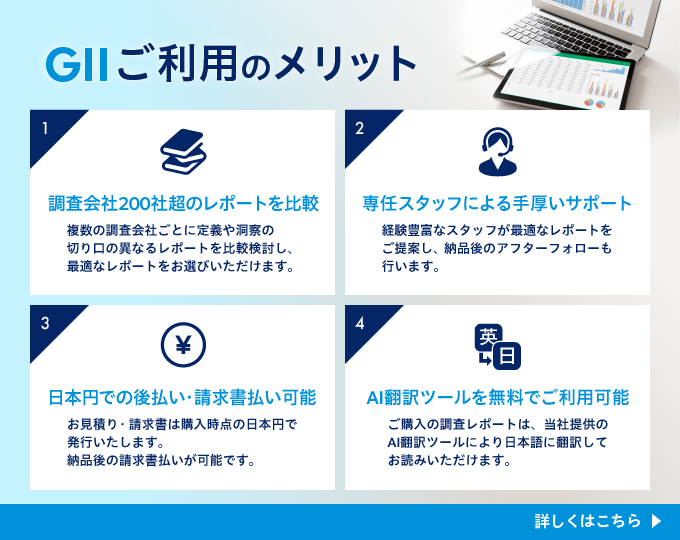
|
市場調査レポート
商品コード
1829523
果物・野菜加工市場:プロセスタイプ別、果物タイプ別、野菜タイプ別、流通チャネル別、エンドユーザー別-2025-2032年世界予測Fruit & Vegetable Processing Market by Process Type, Fruit Type, Vegetable Type, Distribution Channel, End User - Global Forecast 2025-2032 |
||||||
カスタマイズ可能
適宜更新あり
|
|||||||
| 果物・野菜加工市場:プロセスタイプ別、果物タイプ別、野菜タイプ別、流通チャネル別、エンドユーザー別-2025-2032年世界予測 |
|
出版日: 2025年09月30日
発行: 360iResearch
ページ情報: 英文 182 Pages
納期: 即日から翌営業日
|
概要
果物・野菜加工市場は、2032年までにCAGR 6.91%で240億9,000万米ドルの成長が予測されています。
| 主な市場の統計 | |
|---|---|
| 基準年2024 | 141億1,000万米ドル |
| 推定年2025 | 150億9,000万米ドル |
| 予測年2032 | 240億9,000万米ドル |
| CAGR(%) | 6.91% |
青果物加工を再構築する集約的な力への簡潔な方向づけ、業務と製品イノベーションの戦略的優先順位の設定
消費者の嗜好、技術導入、貿易政策が相互に影響し合い、生産、サプライチェーン、製品イノベーションを再構築する中で、青果物加工部門は極めて重要な岐路に立たされています。このエグゼクティブ・サマリーは、加工、流通、小売の各分野における利害関係者の戦略的テコにスポットライトを当てながら、現代の促進要因と構造的シフトを総合しています。このエグゼクティブ・サマリーは、鮮度、利便性、持続可能性がますます調達と投資の意思決定を支配するようになる、進化する食品システムという文脈で業界の力学を組み立てています。
加工施設全体では、オペレーションの改善と原材料の革新が、より健康的で便利なフォーマットや、より長い賞味期限のソリューションに対する需要動向と融合しつつあります。一方、トレーサビリティと食品安全性に対する規制の注目は高まっており、設備投資と工程の再設計の両方が促されています。このイントロダクションの目的は、このセクターに影響を及ぼす重要なベクトルを読者に示し、その後に続く詳細な洞察をプレビューすることで、意思決定者が対応に優先順位をつけ、新たな商機にリソースを合わせることができるようにすることです。
自動化、持続可能性の義務化、進化する消費者の利便性嗜好が、加工、包装、供給のパラダイムをどのように根本的に再構築しているか
業界は、技術革新、消費者の嗜好の変化、持続可能性と透明性に対する規制の強化によって、変革的なシフトを経験しています。自動化とロボットの導入は、労働力のばらつきを抑えながら加工処理能力を向上させ、先進の選別、等級分け、無菌パッケージング技術は、栄養の完全性を損なうことなく製品のライフサイクルを延長しています。同時に、1人前の調理済みメニュー、コールドプレスジュース、素材グレードのピューレといった代替形態の普及は、利便性と高級品質の両方を求める消費者の需要を反映しています。
小売側では、オムニチャネル流通戦略や差別化されたプライベートブランド商品が、競争力のある価格帯で一貫した品質を提供するよう生産者に圧力をかけています。持続可能性の基準は、現在、これまで以上に調達の決定要素となっており、加工業者は水使用量、エネルギー効率、包装のリサイクル可能性を見直すよう求められています。さらに、デジタル・トレーサビリティ・ソリューションが普及し、より迅速な回収と、より強力な証明の主張が可能になっています。これらの変化を総合すると、より弾力性があり、透明性が高く、イノベーション主導の状況が醸成されつつあり、そこでは機敏さとデータ主導の意思決定が市場のリーダーと遅れをとっている企業を区別しています。
2025年の関税調整別、サプライチェーン全体の調達戦略、供給継続計画、業務回復力がどのように変化したかの評価
2025年の米国関税調整の導入は、上流の調達、価格戦略、サプライチェーン・アーキテクチャーに累積的な影響を及ぼし、多くの組織に調達フットプリントとサプライヤー関係の見直しを促しています。関税主導のコスト圧力は、将来の政策変動に対するヘッジとして、ニアショアリングと垂直統合の両方を模索する企業が、単一の貿易回廊へのエクスポージャーを軽減するために、多角的な調達へと戦略的軸足を移すことを促しています。さらに、契約条件やコスト・プラスの取り決めは、バイヤーとサプライヤーの間でより明確にリスクを配分するために再交渉されています。
加工施設は、製品の品質を低下させることなく投入コストの増加を吸収するため、処理能力と歩留まりを最適化することで対応してきました。一部のメーカーは、原材料の使用量を減らすような配合調整と包装の革新を追求し、それによって完成品の価格設定を緩和しています。一方、ロジスティクス・チームは、運転資本への影響とサービス・レベル・コミットメントとのバランスをとるために、在庫戦略を再調整しました。これらの適応策を総合すると、関税の影響をより受けやすい環境において、供給の継続性を維持しながら競合を維持するためのセクター全体の努力が反映されています。
セグメンテーションに基づく詳細な洞察により、加工工程の選択、青果物のサブタイプ、流通経路、エンドユーザーが、生産の優先順位と商業戦略をどのように形成しているかが明らかになります
セグメンテーション分析により、異なる加工アプローチや製品カテゴリーが、消費者の需要や業務の複雑さとどのように交差しているかが明らかになります。加工の種類に基づき、缶詰、乾燥、冷凍、ジュース、ピューレの各形態で事業を展開する企業は、コスト構造、貯蔵期間の考慮、バリュー・プロポジションに影響する、資本、衛生、コールドチェーンに関する明確な要件に直面します。果実の種類に基づく製品計画は、ベリー類、柑橘類、ポメ、ストーンフルーツ、トロピカルフルーツのユニークな収穫リズム、ポストハーベスト処理、官能特性に対応しなければならないです。ベリー類はさらにブルーベリー、ラズベリー、ストロベリーに、柑橘類はレモン、ライム、オレンジに、ポメはリンゴとナシに、ストーンフルーツはチェリーとピーチに、トロピカルフルーツはマンゴーとパイナップルに細分化され、それぞれに合わせた熟成、選別、加工技術が要求されます。
目次
第1章 序文
第2章 調査手法
第3章 エグゼクティブサマリー
第4章 市場の概要
第5章 市場洞察
- 栄養素を保持しながら保存期間を延長する高圧処理技術の統合
- 果物加工施設におけるプラスチック廃棄物を削減するための植物由来の包装ソリューションの拡大
- AIを活用した品質検査システムを導入し、傷や異物をリアルタイムで検出
- クリーンラベルの原材料と機能的利点を備えた、最小限の加工のフルーツスナックに対する消費者の需要の高まり
- 果物の製品別を栄養補助食品原料や動物飼料にアップサイクルすることで循環型経済を実践する
- 農産物サプライチェーン全体の透明性のある追跡を可能にするブロックチェーン対応のトレーサビリティプラットフォームの出現
- ジュース収量の一貫性を高め、全体的な処理時間を短縮するための新しい酵素処理のスケールアップ
- 労働力不足とコスト課題に対処するため、精密な仕分けと梱包を自動化とロボット化に移行する
第6章 米国の関税の累積的な影響, 2025
第7章 AIの累積的影響, 2025
第8章 果物・野菜加工市場プロセスタイプ別
- 缶詰
- 乾燥
- 冷凍
- ジュース
- ピューレ
第9章 果物・野菜加工市場果物の種類別
- ベリー
- ブルーベリー
- ラズベリー
- イチゴ
- 柑橘類
- レモン
- ライム
- オレンジ
- ポメス
- りんご
- 梨
- 核果
- チェリー
- 桃
- トロピカル
- マンゴー
- パイナップル
第10章 果物・野菜加工市場野菜の種類別
- バルブ
- ニンニク
- タマネギ
- ひょうたん
- キュウリ
- スカッシュ
- 葉物野菜
- レタス
- ほうれん草
- ナス科
- ナス
- トマト
- 根
- ニンジン
- じゃがいも
第11章 果物・野菜加工市場:流通チャネル別
- オフライン
- コンビニエンスストア
- ハイパーマーケット
- スーパーマーケット
- オンライン
第12章 果物・野菜加工市場:エンドユーザー別
- 商業用
- ホテル
- レストラン
- 家庭用
第13章 果物・野菜加工市場:地域別
- 南北アメリカ
- 北米
- ラテンアメリカ
- 欧州・中東・アフリカ
- 欧州
- 中東
- アフリカ
- アジア太平洋地域
第14章 果物・野菜加工市場:グループ別
- ASEAN
- GCC
- EU
- BRICS
- G7
- NATO
第15章 果物・野菜加工市場:国別
- 米国
- カナダ
- メキシコ
- ブラジル
- 英国
- ドイツ
- フランス
- ロシア
- イタリア
- スペイン
- 中国
- インド
- 日本
- オーストラリア
- 韓国
第16章 競合情勢
- 市場シェア分析, 2024
- FPNVポジショニングマトリックス, 2024
- 競合分析
- AGRANA Beteiligungs-AG
- Albertsons Companies, Inc.
- Alfa Laval
- Archer Daniels Midland Company
- B&G Foods Inc.
- Bonduelle Group.
- Buhler AG
- Dohler GmbH
- Dole Food Company, Inc.
- Finis Food Processing Equipment B.V.
- Fresca Group
- GEA Group AG
- Greencore Group Plc
- ITC Limited
- JBT Corporation
- John Bean Technologies
- Krones AG
- Marel
- Mazzoni S.p.A.
- Neologic Engineers Pvt. Ltd.
- Nestle S.A.
- Pepsico, Inc.
- Sysco Corporation
- The Kraft Heinz Company
- The Kroger Co.
- DeHaat

